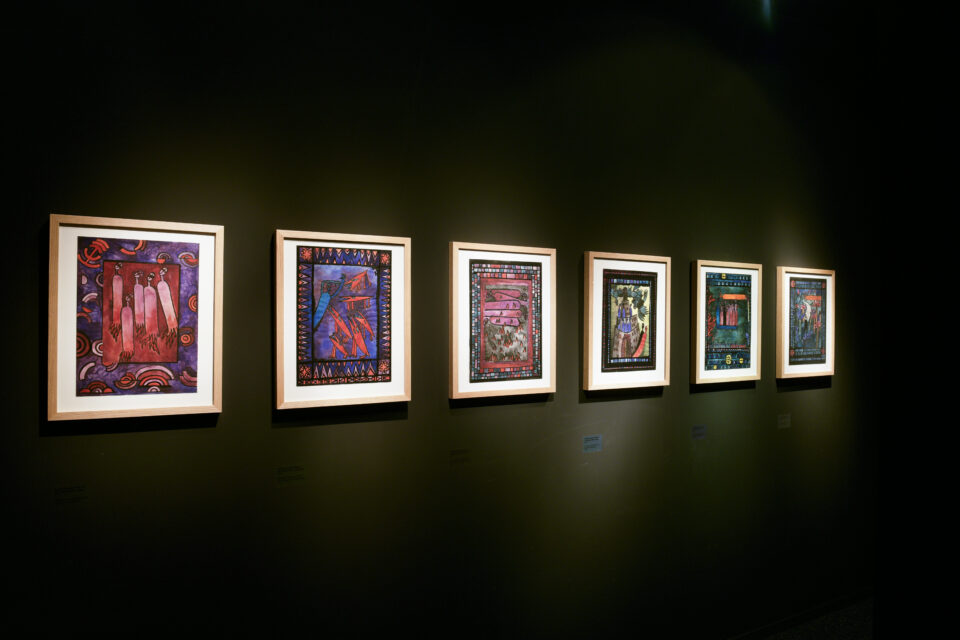The Czech painter and creator of assemblages Jaroslav Vožniak (1933–2005) obsessively explored the subject of decay, the collage-like and rapid-edit perception of reality, and above all the parallel world of the bizarre sensuality of media and advertising. The exhibition’s focus is on a series of watercolours inspired by Dante’s Divine Comedy that Vožniak created in the late 1950s.
The drawings from the GASK collections are framed by two currently unexhibited canvases that reveal the predatory nature of man, filled with latent yet carefully hidden and suppressed violence. Over the course of just a few years, Vožniak’s originally ornamental and fairy-tale scenes, in which human figures are represented by anonymous signs, are transformed into oppressive scenes full of meticulously sketched details depicting the distant suffering of the contemporary world. We find ourselves in the 1960s, among its celebrities, actresses, advertising models, and escorts. It is a world full of danger and capricious fortune, a world of accumulated hidden passions and pains. The masterly details of Vožniak’s drawings serve to amplify the wild, almost bestial nature of the surrealist scenes. Vožniak and Dante say of the world of entertainment: “All Hope Abandon, ye Who Enter in!”
Thanks to his study of reproduction lithography, Jaroslav Vožniak (1933–2005) possessed a perfect mastery of finely detailed line drawing. He continued his studies under Karel Svolinský at the Academy of Arts, Architecture and Design (1951–1953), followed by printmaking under Vladimír Silovský at the Academy of Fine Arts (1954–1959), where he made the acquaintance of Karel Nepraš and Bedřich Dlouhý. Together, they founded the Šmidrové Group with the aim of exploring and representing in art the aesthetics of strangeness – a goal that Jaroslav Vožniak fulfilled absolutely and completely.




